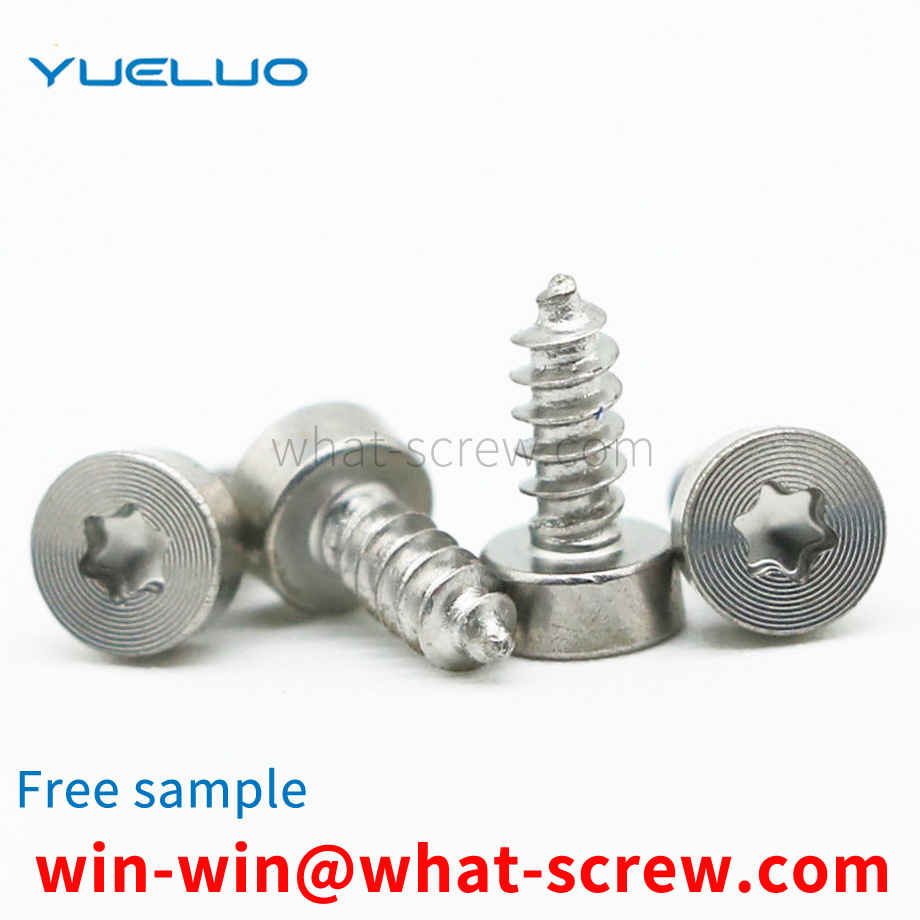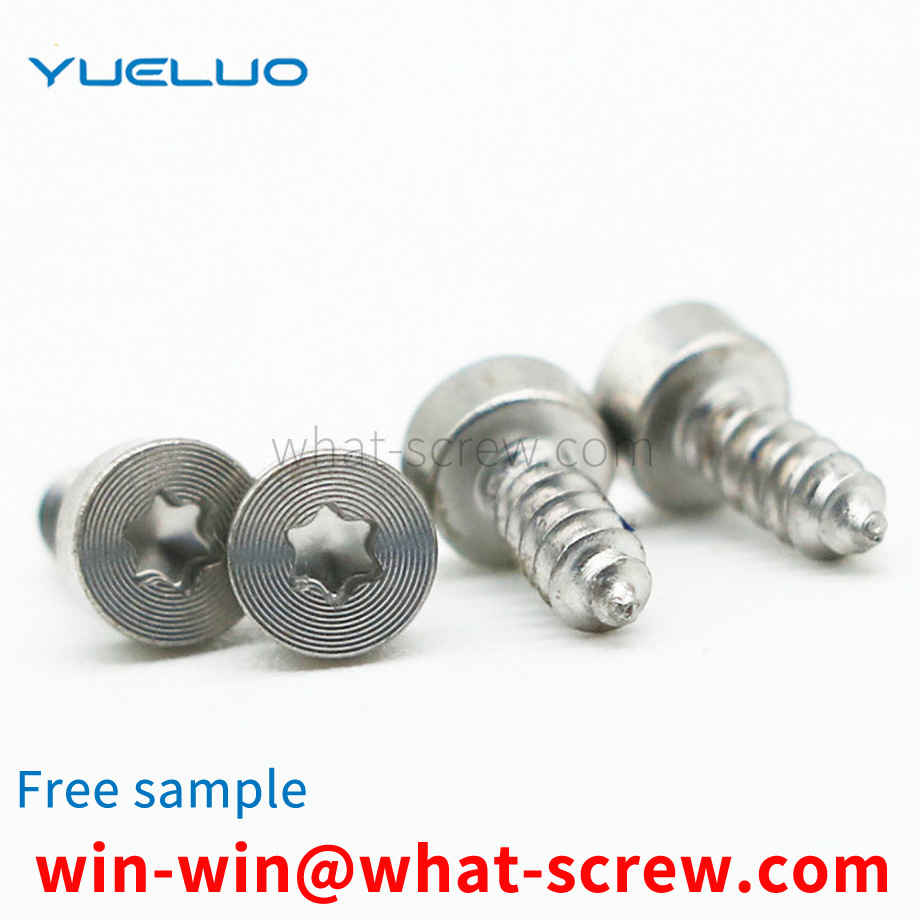(1) The screw-in performance test is to screw the self-tapping locking screw sample into the test plate until one complete thread completely passes the test without breaking. (2) The destructive torque test is to clamp the stem of the self-tapping locking screw specimen in a thread mold or other device that matches the screw thread, and uses a calibrated torque-measuring device to measure the screw. Torque is applied until fracture, which should not occur in the clamped threaded portion. (3) Carry out a tensile test on the screw sample to check the minimum tensile load for failure. The fracture should be within the length of the rod or the unthreaded thread, and should not occur at the junction of the nail head and the rod. Before the sample breaks, it should be It can reach the minimum tensile load specified by the corresponding performance class. (4) Hydrogen embrittlement is a problem that must be strictly paid attention to in the surface treatment process of self-tapping locking screws. In the pickling process, the screw is stirred in dilute hydrochloric acid, and the amount of hydrogen absorbed by the pickling steel increases linearly with the square root of time and reaches the saturation value. Less than 100%, a large number of hydrogen atoms will be produced, which will be attached to the surface of the screw, resulting in hydrogen infiltration, and the steel will become brittle due to the absorption of hydrogen. The self-tapping locking screw takes 6~8h to drive hydrogen, and the temperature is 160~200℃ (phosphating) and 200~240℃ (electroplating). However, in the production process, the hydrogen drive time should be determined according to many production conditions such as core hardness, surface roughness, electroplating time, coating thickness, pickling time, and acid concentration. It is best to do it before passivation and just after electroplating.
With the rapid development of China's machinery industry, especially the development of heavy industry, the demand for large-scale metal processing equipment is increasing; at the same time, higher requirements are also placed on the technical parameters of the equipment. For some large-scale CNC equipment, to ensure the machining accuracy of the whole product, it is not only necessary to rely on high-performance components such as full closed-loop control and precision transmission components, but also requires the positioning and stability of the joint surfaces between the large and medium-sized components of the equipment. The common positioning of the joint surface between large components adopts flat key positioning, and this method requires processing the keyway at the joint surface of the large components. Since the joint surface of large parts is affected by factors such as processing and splicing, it cannot guarantee that the keyways on the large parts combined can be matched according to the theoretical requirements. Therefore, the positioning flat key needs to press the flat key in the two parts of large parts. Different repair allowances Trim into a stepped shape. The height difference of this keyway in different large components makes a single flat key need to be repaired on four sides, which increases the difficulty of the key repair process and makes it difficult to improve work efficiency. Not only that, when the flat key is repaired and assembled, it must be in an interference fit with the keyway, which makes the disassembly and assembly of the flat key more laborious.
Gears, mechanical components with teeth on the rim that can continuously mesh to transmit motion and power, are mechanical parts with teeth that can mesh with each other. The gears used in industry are generally made of steel. The commonly used steels are quenched and tempered steel, hardened steel, carburized and quenched steel and nitrided steel. The strength of cast steel is slightly lower than that of forged steel, and it is often used in Larger-sized gears; gray cast iron has poor mechanical properties and can be used in light-load open gear transmissions; ductile iron can partially replace steel gears; plastic gears are mostly used in places where light loads and low noise are required, and are matched with them The gears are generally made of steel gears with good thermal conductivity.
Existing wood screws are composed of a threaded portion with a tapered angle and arranged along a tapered stem and a screw head. The head of the screw can be a countersunk head, hemispherical, or other shapes, and the head of the screw has a groove that fits with the tool, a word groove, and a concave cross groove. The taper angle of existing wood screws is either 45 degrees or 60 degrees, and the front end of the taper angle is a pointed point formed by a rotating thread. The existing wood screws have the following three deficiencies in use. Because the taper angle is 45 degrees or 60 degrees, and the thread angle is 64 degrees, the resistance when entering the material is relatively large, so the existing wood screws are manually screwed. It is difficult to screw in, especially when it is used for hardwood materials, and it often happens that the groove of the screw head is screwed out; A large lateral moment will be formed when the screw is screwed, which is prone to the problem of deviation from the position; in addition, because the existing screw is tapered, it will be subjected to both radial force and axial force when entering the material, and its stress state It is more complicated, so it is easy to cause the cracked wood material to burst, and even cause the material to have longitudinal cracks and be unusable.
Gaskets are primarily used to protect the bearing surfaces of the coupled pieces. Bolts, nuts, etc. are mostly made of medium carbon steel, and alloy steel is also used. When there are requirements for anti-corrosion or electrical conductivity, copper, copper alloy and other non-ferrous metals can also be used. The standards of China and many countries stipulate that threaded joints are graded according to their mechanical properties, and the grade code is marked on the fastener. The rivet is made of steel, aluminum alloy or copper alloy, etc., and the head has various shapes to meet the needs of different rivet seams.
We have many years of experience in the production and sales of screws, nuts, flat washers, etc. The main products are: aluminum teeth, copper columns, natural 4.8 hex screws, table and chair bolts, connecting multi-axis mold frames and other products, we can provide you with suitable products. Your fastener solution.



















 Service Hotline
Service Hotline




